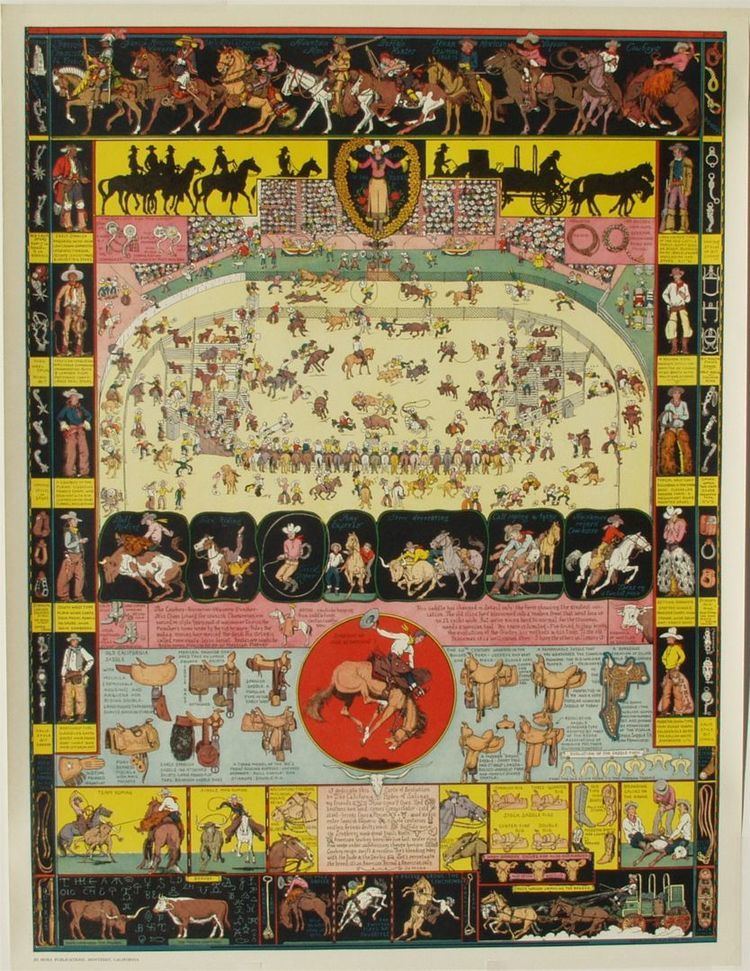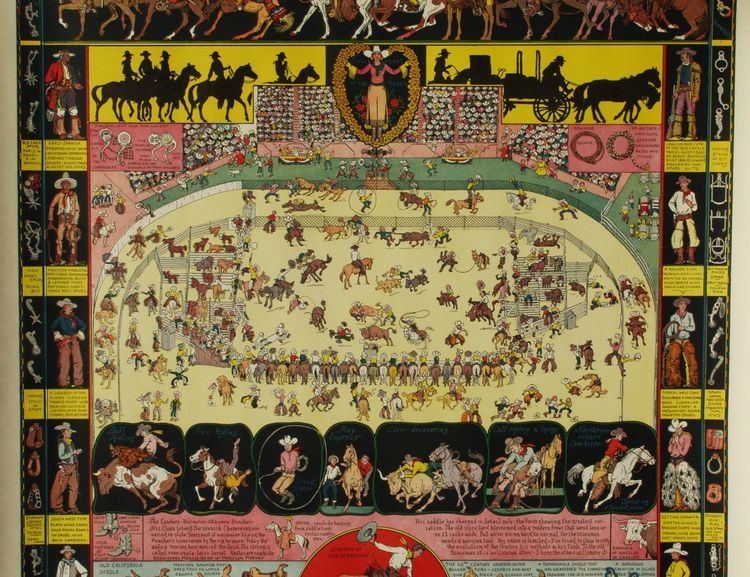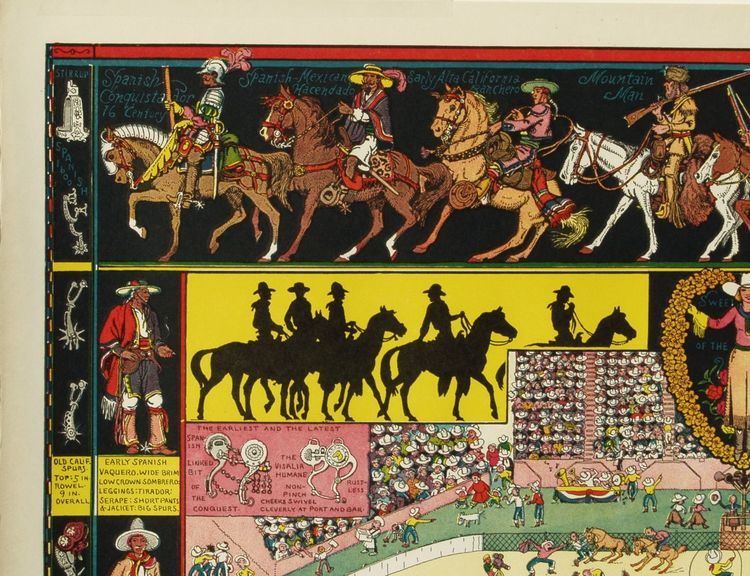Name Jo Mora | Role Cartoonist | |
 | ||
Books A Log of the Spanish Main, Chippie de Munk: The Great Inventor | ||
100 story project peter hiller jo mora
Joseph Jacinto Mora (October 22, 1876 – October 10, 1947) was a Uruguayan-born American cartoonist, illustrator and cowboy, who lived with the Hopi and wrote extensively about his experiences in California. He was an artist-historian, sculptor, painter, photographer, illustrator, muralist and author. He has been called the "Renaissance Man of the West".
Contents
- 100 story project peter hiller jo mora
- jo mora exhibit walk through
- Biography
- In music
- Museum Catalogs
- References

jo mora exhibit walk through
Biography
Mora was born on October 22, 1876 in Montevideo, Uruguay. His father was the Catalan sculptor, Domingo Mora, and his mother was Laura Gaillard Mora, an intellectual born in the Bordeaux region of France. His elder brother was F. Luis Mora, who would become an acclaimed artist and the first Hispanic member of the National Academy of Design. The family entered the United States in 1880 and first settled in New York City, and then Perth Amboy, New Jersey. Jo Mora studied art at the Art Students League of New York and the Cowles School in Boston. He also studied with William Merritt Chase. In Boston, he worked as a cartoonist for a newspaper called the Boston Evening Traveller and then worked for the Boston Herald.

In the spring of 1903, Mora arrived in Solvang, California. He stayed at the Donohue Ranch. He made plans to travel to the Southwest to paint and photograph the Hopi. He spent time at the Mission Santa Inés; those photographs are now maintained by the Smithsonian Institution. Mora visited many Spanish missions in California that summer by horseback. He followed the "Mission Trail", also called the "Kings Highway".

From 1904 to 1906, Mora lived with the Hopi and Navajo near Oraibi, Arizona. He took photographs, painted and otherwise recorded the daily life of these Native Americans, including the Hopi Snake Dance. He learned the Native languages and made detailed drawings of what he observed.

In 1907, Mora returned to California and married Grace Needham. Their son, Joseph Needham Mora, was born on March 8, 1908. The Moras moved to San Jose, California, where Mora continued his work. In 1915 he served on the International Jury of Awards at the Panama-Pacific International Exposition and displayed six sculptures. In 1915-16 two of his most important sculptural commissions were revealed: the bronze memorial tablet with the profile of the late Archbishop Patrick W. Riordan for the Knights of Columbus and the Cervantes Monument in San Francisco’s Golden Gate Park. By 1919, he was sculpting for the Bohemian Club, including a memorial plaque dedicated to Bret Harte, completed in August 1919 and mounted on the outside of the private men's club building in San Francisco. In 1925, he designed the commemorative half dollar for the California Diamond Jubilee. During this period he also illustrated a number of books, made large murals, and published charts, maps (cartes) and diagrams of the West and Western themes. Beginning in 1937, Mora wrote and illustrated children's books about the West. In 1939, a Works Progress Administration project was completed, with Mora bas-relief sculpture adorning the King City High School Auditorium building.
In 1921 the Mora family moved their primary residence to the largest art colony on the West Coast, Carmel-by-the-Sea. Here Jo receive the most important commission of his career, the creation of the monumental bronze and travertine sarcophagus and altar for Father Junípero Serra to be placed at the west end of the Mission Carmel church. He was extremely active in the Carmel community and served on the board of directors of the Carmel Art Association, where his sculptures were exhibited between 1927 and 1934. He co-established Carmel’s first private art gallery which was operated by resident artists. In 1931 Jo, his wife, and daughter Patricia moved to nearby Pebble Beach into a newly built home. Five years later in the adjoining large studios he completed his massive diorama, Discovery of the San Francisco Bay by Portola, for the California Pavilion at the 1939-40 Golden Gate International Exposition on Treasure Island. At a length of almost 100 feet, with 64 sculptures of Spaniards and Indians and over 200 animals, it was said “to surpass anything of its kind at the Fair.” He fashioned smaller dioramas for the Will Rogers Memorial Museum in Claremore, Oklahoma and the Sutter’s https://en.m.wikipedia.org/wiki/Sutter's_Fort Fort Museum in Sacramento, California.
Between 1908 and the late 1940s his sculptures, illustrations, watercolors and etchings were frequently exhibited across the United States. Mora died October 10, 1947, in Monterey, California. His last book, Californios, which was devoted to the life of the rancheros of Alta California, was published posthumously in New York City to great acclaim.
